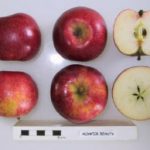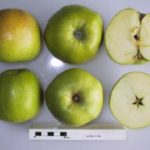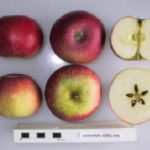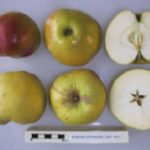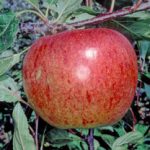History of the Aldwick Beauty The Aldwick Beauty was grown originally by Mrs DM Alford, Aldwick, Bognor Regis and assessed by the National Fruit Trials in 1969. It is currently cultivated as part of Brighton Permaculture Trust’s National Collection in Stanmer Park, Brighton. You can see an Aldwick Beauty apple tree (planted 2010) in Home Farm Orchard, Stanmer…
More information ...Sussex apple varieties
Alfriston
History of the Alfriston apple Raised in the late 1700s by Mr Shepherd of Uckfield and originally named Shepherd’s Pippin. It was renamed Alfristonin 1819 by Mr Booker who lived in that village. It received an RHS Award of Merit in 1920. Currently cultivated as part of Brighton Permaculture Trust’s National Collection in Stanmer Park, Brighton. Description of fruit…
More information ...Ashdown Seedling
History of the Ashdown Seedling apple Grown by John Clarke who founded the orchards of the Ashdown & General Land Company during the 1930s. His son Rory Clarke remembers how his father grew it from the pip of a bright red McIntosh apple that he had eaten. The original tree grew in the kitchen garden…
More information ...Bossom
History of the Bossom apple The last known tree growing in the garden of Miss Scott of Graffham blew down in the gale of 1986. On hearing of the damage to the tree, the Rev. Donald Johnson and Lady Caroline Egremont took graft material from the fallen tree and distributed it to the National Fruit…
More information ...Coronation
History of the Coronation apple The Coronation apple was raised by H C Princep at Buxted Park and introduced by nurseryman Pyne, Topsham, Devon. It was recorded in 1902 in the year of the coronation of Edward V11 and won an RHS Award of Merit in 1902. It is currently cultivated as part of Brighton…
More information ...